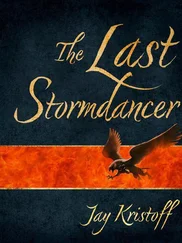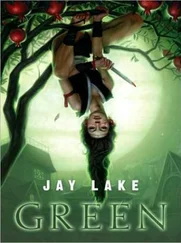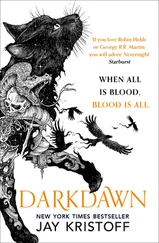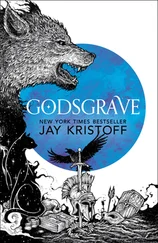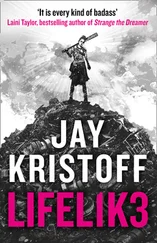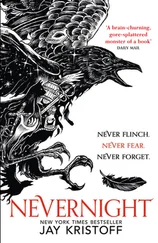Seii Taishōgun—literally “great general who subdues eastern barbarians.”
Tora—literally “Tiger.” The greatest of the four zaibatsu of Shima, and the clan from which the Kazumitsu Dynasty originates. The Tora are a warrior clan, who venerate Hachiman, the God of War. Also: the kami guardian of the same zaibatsu, closely associated with the concept of ferocity, hunger and physical desire.
Yōkai—a blanket term for preternatural creatures thought to originate in the spirit realms. These include arashitora, sea dragons and the dreaded oni.
Zaibatsu—literally “plutocrats.” The four conglomerate clans of the Shima Imperium. After the rebellion against the Tenma Emperors, Shōgun Kazumitsu rewarded his lieutenants with stewardship over vast territories. The clans to which the new Daimyo belonged (Tiger, Phoenix, Dragon and Fox) slowly consumed the clans of the surrounding territories through economic and military warfare, and became known as “zaibatsu.”
CLOTHING
Hakama—a divided skirt that resembles a wide-legged pair of trousers, tied tight into a narrow waist. Hakama have seven deep pleats–five in front, two at the back–to represent the seven virtues of Bushido. An undivided variant of hakama exists (i.e. a single leg, more like a skirt) intended for wear over a kimono.
Jin-haori—a kimono-style tabard worn by samurai.
Jûnihitoe—an extraordinarily complex and elegant style of kimono, worn by courtly ladies.
Kimono—an ankle-length, T-shaped robe with long, wide sleeves, worn by both men and women. A younger woman’s kimono will have longer sleeves, signifying that she is unmarried. The styles range from casual to extremely formal. Elaborate kimono designs can consist of more than twelve separate pieces and incorporate up to sixty square feet of cloth.
Mempō—a face mask, one component of the armor worn by samurai. Mempō are often crafted to resemble fantastical creatures, or made in twisted designs intended to strike fear into the enemy.
Obi—a sash, usually worn with kimono. Men’s obi are usually narrow; no more than four inches wide. A formal woman’s obi can measure a foot in width and up to twelve feet in length. Obi are worn in various elaborate styles and tied in decorative bows and knots.
Uwagi—a kimono-like jacket that extends no lower than mid-thigh. Uwagi can have long, wide sleeves, or be cut in sleeveless fashion to display the wearer’s irezumi.
WEAPONS
Daishō—A paired set of swords, consisting of a katana and wakizashi. The weapons will usually be constructed by the same artisan, and have matching designs on the blades, hilts and scabbards. The daishō is a status symbol, marking the wearer as a member of the samurai caste.
Katana—A sword with a single-edged, curved, slender blade over two feet in length, and a long hilt bound in criss-crossed cord, allowing for a double-handed grip. Katana are usually worn with shorter blades known as wakizashi.
Nagamaki—a pole weapon with a large and heavy blade. The handle measures close to three feet, with the blade measuring the same. It closely resembles a naginata, but the weapon’s handle is bound in similar fashion to a katana hilt—cords wrapped in criss-crossed manner.
Naginata—a pole weapon, similar to a spear, with a curved, single-edged blade at the end. The haft typically measures between five and seven feet. The blade can be up to three feet long, and is similar to a katana.
Ō-yoroi—suits of heavy samurai armor powered by chi-fueled engines. The armor augments the wearer’s strength, and is impenetrable to most conventional weaponry.
Tantō—a short, single- or double-edged dagger, between six and twelve inches in length. Women often carry tantō for self-defense, as the knife can easily be concealed inside an obi.
Tetsubo—a long war club, made of wood or solid iron, with iron spikes or studs at one end, used to crush armor, horses or other weapons in battle. The use of a tetsubo requires great balance and strength—a miss with the club can leave the wielder open to counterattack.
Wakizashi—a sword with a single-edged, curved, slender blade between one and two feet in length, with a short, single-handed hilt bound in criss-crossed cord. It is usually worn with a longer blade, known as a katana.
RELIGION
Amaterasu—Goddess of the Sun. Daughter of Izanagi. She was born along with Tsukiyomi, God of the Moon, and Susano-ō, God of Storms, when her father returned from Yomi and washed to purify himself of Yomi’s taint. She is a benevolent deity, a bringer of life, although in recent decades has become seen as a harsh and unforgiving Goddess. She is not fond of either of her brothers, refusing to speak to Tsukiyomi, and constantly tormented by Susano-ō. She is patron of the Phoenix zaibatsu, and is also often venerated by women.
Enma-ō—one of the nine Yama Kings, and chief judge of all the hells. Enma-ō is the final arbiter of where a soul will reside after death, and how soon it will be allowed to rejoin the wheel of life.
Izanagi(Lord)—also called Izanagi-no-Mikoto, literally “He who Invites”, the Maker God of Shima. He is a benevolent deity who, with his wife Izanami, is responsible for creating the Shima Isles, their pantheon of Gods and all the life therein. After the death of his wife in childbirth, Izanagi travelled to Yomi to retrieve her soul, but failed to return her to the land of the living.
Izanami(Lady)—also called the Dark Mother, and the Endsinger, wife to Izanagi, the Maker God. Izanami died giving birth to the Shima Isles, and was consigned to dwell in the Yomi underworld. Izanagi sought to reclaim his wife, but she was corrupted by Yomi’s dark power, becoming a malevolent force and hater of the living. She is mother to the thousand and one oni, a legion of demons who exist to plague the people of Shima.
Hachiman—the God of War. Originally a scholarly deity, thought of more as a tutor in the ways of war, Hachiman has become re-personified in recent decades to reflect the more violent warlike ways of the Shima government. He is now seen as the embodiment of war, often depicted with a weapon in one hand and a white dove in the other, signifying desire for peace, but readiness to act. He is patron of the Tiger zaibatsu.
The hells—a collective term for the nine planes of existence where a soul can be sent after death. Many of the hells are places where souls are sent temporarily to suffer for transgressions in life, before moving back to the cycle of rebirth. Before Lord Izanagi commanded the Yama Kings to take stewardship over the souls of the damned in order to help usher them towards enlightenment, Shima had but a single hell—the dark, rotting pit of Yomi.
The hungry dead—the restless residents of the underworld. Spirits of wicked people consigned to hunger and thirst in Yomi’s dark for all eternity.
Raijin—God of Thunder and Lightning, son of Susano-ō. Raijin is seen as a cruel God, fond of chaos and random destruction. He creates thunder by pounding his drums across the sky. He is the creator of arashitora, the thunder tigers.
Susano-ō—the God of Storms. Son of Izanagi, he was born along with Amaterasu, Goddess of the Sun and Tsukiyomi, God of the Moon, when his father returned from Yomi and washed to purify himself of Yomi’s taint. Susano-ō is generally seen as a benevolent God, but he constantly torments his sister, Amaterasu, Lady of the Sun, causing her to hide her face. He is father to the Thunder God, Raijin, the deity who created arashitora—the thunder tigers. He is patron of the Ryu zaibatsu.
Читать дальше



